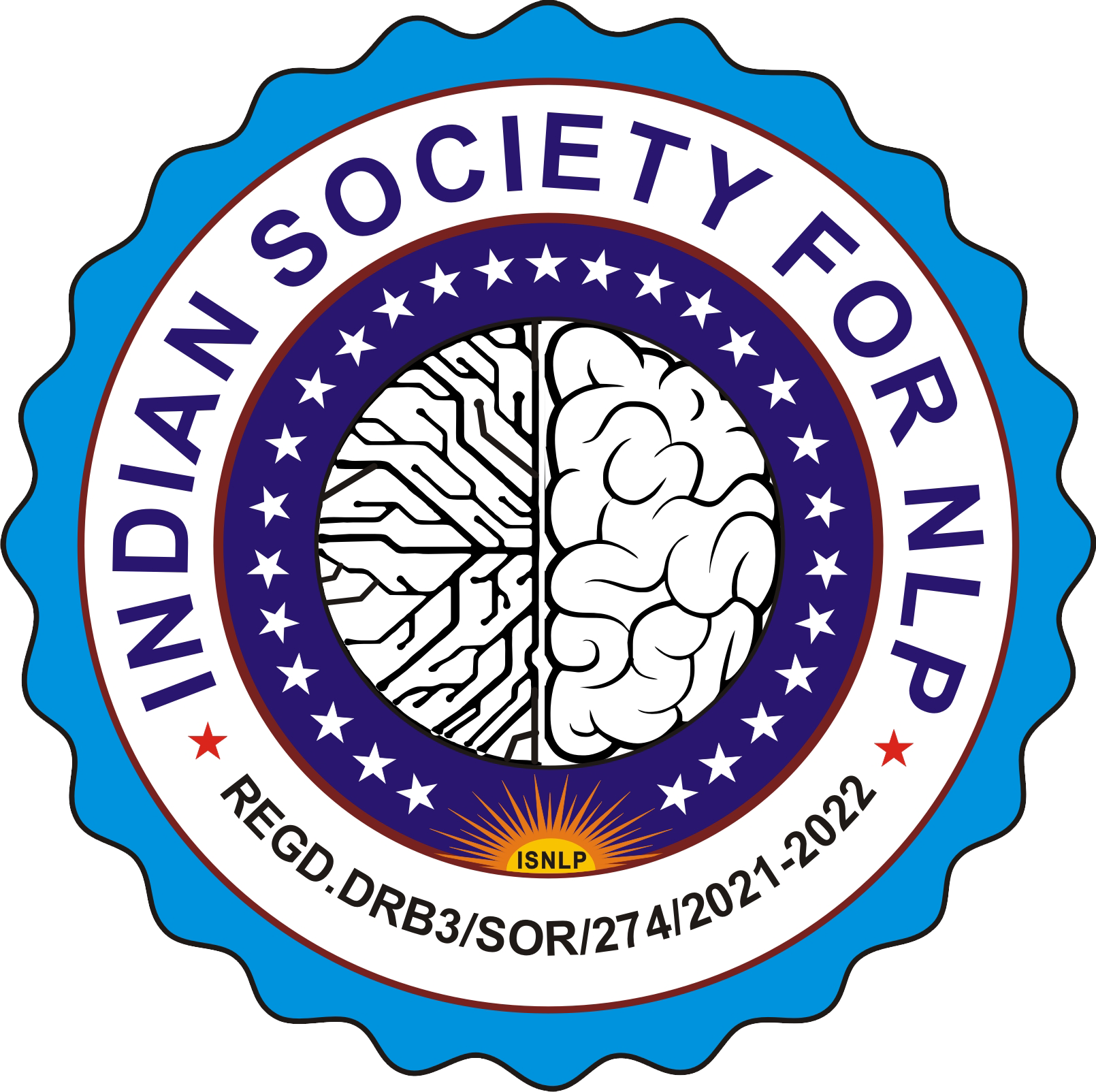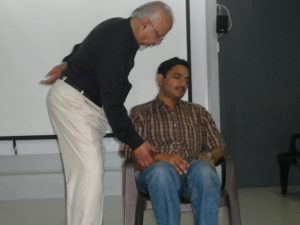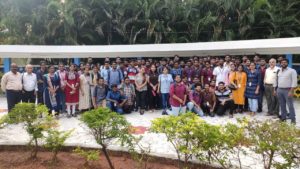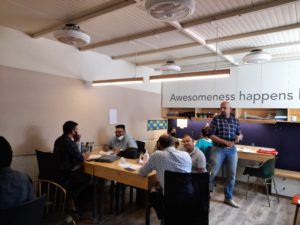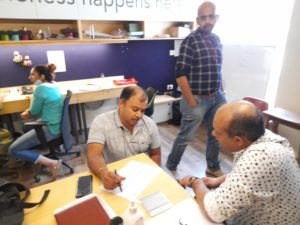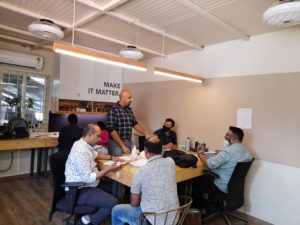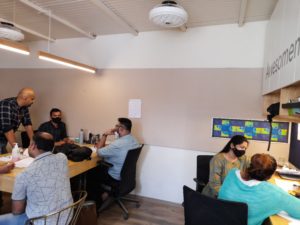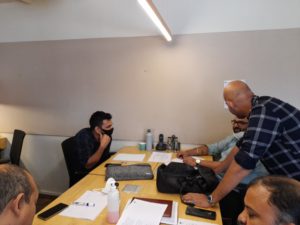Neuro-Linguistic Programming (NLP)
Indian Society for NLP (ISNLP) is all about NLP in its pursuit of promoting learning and application of NLP for human excellence.
NLP stands for Neuro Linguistic Programming. It is an art and science of how people change their lives. It is a methodology of communication, personal development, and psychotherapy created by Richard Bandler and John Grinder in California, United States, in the 1970s. Among the appealing features of NLP, is a connection between neurological processes (neuro-), language (linguistic) and behavioral patterns learned through experience (programming), and that these can be changed to achieve specific goals in life. It is applicable to diverse fields such as psychotherapy, counselling, education, organizational development, coaching, supervision, consultation, and management training.
NLP has its roots in real life behaviour. Hence, it is highly pragmatic, not just theory and research but focuses on results and outcomes. In simple words, it is a set of principles, attitudes and technologies which will guide people how to eliminate undesirable behaviours and adopt new purposeful behaviours that will give them the ability to enjoy physical, mental and emotional states of well-being. It is about how people become successful in what they do – how they achieve the results they want and improve the quality of life.
Defining NLP
Neuro: ‘Neuro’ refers to the nervous system. Our brain receives information from external world through the nervous system and the five senses. This information is filtered, processed, edited and translated and stored into thought processes, both conscious and unconscious. Thought processes activate neurological system, which in turn affects emotions, physiology and behaviour. Hence, it is both neurological and physiological process as well. Body and mind form an inseparable unity in human being.
Thus, ‘neuro’ is all about how we think and how we process our thoughts – how our values, beliefs, memories and other meta programs that are already stored inside influence our process of thinking – and what meaning we give to what goes on inside – and how that creates our emotional states.
Linguistics: ‘Linguistics’ refers to both verbal and non-verbal (like body language, symbols etc.) through which we communicate to represent what is stored inside. It means how we use language to order, give meaning to and express what we have experienced through our senses. It is how we communicate our thoughts, conscious and unconscious, to ourselves, to other people and the world around us. Linguistics is the study of what we speak and more important how we speak can influence our experience. NLP is a set of models of how communication impacts and is impacted by subjective experience.
Programming: ‘Programming’ is the way in which experience is stored, coded and transformed (similar to how software runs on a PC). By deleting, upgrading or installing our mental software, we can change how we think and, as a result, how we act.
Neuro Linguistic Programming (NLP) essentially deals with the our internal process by which we create a mental structure (Map) of our experience of the world of ‘reality’ through our neurology (mind) and language (linguistic structure) that ultimately causes states (feelings) within us to generate our behaviours.
NLP is often referred to as the software for the human brain. It focuses on process of mind. An NLP practitioner does not ask why do you have a problem (that is the domain of the academicians). Rather, an NLP practitioner will ask and seek to find out how do you have that problem.
The Story of NLP
NLP has spread all over the world and now it enjoys the reputation of being “the most comprehensive synthesis of psychological knowledge. It is widely used in business, management, sales, education, law, sports and coaching. NLP is a profound set of tools for personal development.
At the heart of NLP is the ‘modelling’ of human excellence – and that is where the story of NLP begins in the early 1970s (1972), from the collaborative efforts of Richard Bandler and John Grinder at the University of California, Santa Cruz.
Bandler, a graduate student of mathematics and psychology with a particular interest in computer science and psychotherapy, got involved in transcribing some audio and video seminar tapes of Fritz Perls (1893-1970), the innovative psychotherapist and originator of the school of therapy known as “Gestalt Therapy” and Virginia Satir (1916-88), the founder of Family Counseling. Bandler discovered that Virginia Satir was consistently able to resolve difficult family relationships that many other therapists found intractable. Bandler found that by copying certain aspects of their (Perls&Satir) behaviour and language he could achieve similar results, and began running a Gestalt Therapy group on the campus.
John Grinder, an associate professor of linguistics at the University, was intrigued by Bandler’s abilities, and reputedly said to him: ‘If you teach me how to do what you do, I’ll tell you what you do.’
It wasn’t long before Grinder too, could get the same kind of therapeutic results as Bandler and Perls, simply by copying what Bandler did and said. Then, by a process of subtraction – by systematically leaving various elements out – Grinder was able to determine what was essential and what was irrelevant.
Realising they were on to something, Bandler and Grinder joined forces and went on to write the first NLP book, The Structure of Magic,Volume-I, which was published in 1975. Subtitled A Book about Language and Therapy, it introduced the first NLP model, the Meta Model – 12 language patterns distilled from modeling Perls and Satir.
Bandler and Grinder were living very close to Gregory Bateson, the British anthropologist and writer on communication systems theory. Bateson was, in fact, their mentor. Bateson himself had written on many different topics – biology, cybernetics, anthropology and psychotherapy. He is best known for developing the double bind theory of schizophrenia. His contribution to NLP was profound. Perhaps only now it is becoming clear exactly how influential he was.
Following their modeling of Perls and Satir, Bandler and Grinder went on to model Milton H. Erickson (1901-80) the world’s foremost medical hypnotist and he was the father of “conversational hypnosis”. Ericksonian Hypnosis , thus, became part of NLP. It was Gregory Bateson who introduced them to Erickson.
By the late 1970s, the human potential movement had developed into generating methodologies for developing human sytems. At the center of this growth was the Esalen Institute at Big Sur, California. Perls had led numerous Gestalt therapy seminars at Esalen. Satir was an early leader and Bateson was a guest teacher. Bandler and Grinder claimed that in addition to being a therapeutic method, NLP was also a study of communication and began applying it as a business tool.
NLP in Action
What You Will Get from Learning About NLP
But it’s the personal benefits of learning about NLP that hold the key to its increasing success. What will it do for you? Here are just a few of the benefits you can expect. It will:
- help you know what you want and how to get it.
- help you to build stronger, deeper relationships.
- enhance your self-confidence and self-esteem.
- strengthen your ability to connect with others.
- put you in the driving seat of your life.
- enable you to communicate more effectively and persuasively.
- help you to perform at your best for most of the time.
- change limiting beliefs about yourself and the world.
- enable you to be even more creative.
- help you to control the way you think, feel and act.
- enable you to accomplish your personal and professional goals.
NLP works. By taking control of your own thoughts you can banish negative thinking and achieve more than you ever thought possible.
In What Specific areas of Life and Work Can NLP be Used?
- Parenting: If you are a parent you will learn how to foster good and fast growth in your children and how to establish clear communication with them right from the start in their childhood.
- Self-development and Relationship Building: For sensing the impact, appropriate thinking to improve self-awareness, understanding the dynamics of mind is necessary. To understand people, skills relating to mind are to be developed. NLP will be helpful.
- Teaching and Learning: If you are an educator/ teacher/ student, you will learn accelerated learning strategies and memory improvement. You will also learn how to build up rapport with students and design teaching and learning methodologies to suit different types of students.
- Therapy and Counselling: If you are a therapist or counselor you will be able to bring massive shifts in your clients with a few sittings. You can help them to get rid of this limiting beliefs, procrastination, phobias, chronic pains, traumas, allergies, migraine etc for life.
- OD and HRD : Organizational and HRD systems and processes are based on communication and behavior – Leadership, Teams, Roles, Recruitment, Training, Production, Marketing etc. NLP can be used for enhancing the effectiveness of the system and people.
- NLP is simple and easy to learn
- NLP, Neuro Linguistic Programming is about managing mind through language
- Neuro Linguistic Programming is about reprogramming the patterns of our perceptions of the world, the maps of our mind.
- The maps of our world are in the traces of our unconscious mind.
- All our perceptions of the world are embedded as our mind’s map of the world, it is our world
- These maps guide our mental states, physiology and ultimately our communication and behaviours.
- By changing the maps we can change our behaviours and our way of living.
- Thus, we become effective in bringing the desired outcomes of our behaviours.
- We can build the competence of NLP, learn the NLP techniques master the methods to coach, counsel and heal others.
- NLP is not about complex theories of proof. The focus is on results. If it works for us to improve ourselves, to heal ourselves, then, it is NLP.
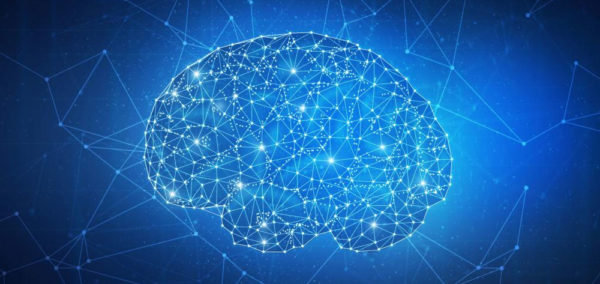
How could ISNLP help you?
Upcoming Events
- There are no upcoming events.
